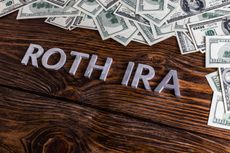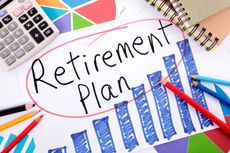ESG: Investing in Line with Your Values
Four myths about socially responsible investments debunked.

Sticking to your principles feels good. But could it also be good for your portfolio?
That’s the question raised by “sustainable” funds, an umbrella term for a diverse group of mutual funds and exchange-traded funds that generally incorporate environmental, social and corporate governance (ESG) criteria in their investment processes. Typically, that doesn’t mean simply avoiding “sin” stocks such as alcohol, tobacco and firearms companies. The majority of these funds take a more active approach. They may seek out companies that have a strong track record on pollution, product safety and human rights; buy bonds that fund renewable energy projects; or actively engage with portfolio companies on board diversity or other governance issues.
Fund companies and investors are seeing the virtues—and potential profits—of values-based investing. There were 351 sustainable U.S. mutual funds and ETFs at the end of last year, according to investment-research firm Morningstar, up nearly 50% from 2017. And for the third consecutive year, sustainable funds took in record net new money in 2018, Morningstar found, even as the overall U.S. fund industry suffered its worst year since 2008.

Sign up for Kiplinger’s Free E-Newsletters
Profit and prosper with the best of expert advice on investing, taxes, retirement, personal finance and more - straight to your e-mail.
Profit and prosper with the best of expert advice - straight to your e-mail.
While sustainable investing is often portrayed as a millennial phenomenon, baby boomers are also flocking to these funds as they increasingly look for opportunities to align their portfolios with their values. A 2018 survey by American Century Investments found that 44% of boomers are drawn to investments designed to have a positive social impact. But sustainable funds are not always easy to navigate. As demand for ESG investments has grown, for example, so too has the number of research firms that rate companies on ESG criteria. Different funds may rely on different ratings when selecting portfolio holdings.
Although sustainable funds were long focused on certain market segments, such as U.S. large-cap stocks, they now cover every major asset class, making it possible for investors to build a complete, diversified portfolio of these funds. Their investment strategies have also evolved, in many cases shifting from a focus on excluding certain industries to including sustainability leaders in each industry. Instead of simply avoiding energy companies, for example, they might focus on those that invest heavily in green technology, says Shana Sissel, senior portfolio manager at CLS Investments. “That actually encourages companies to move away from bad habits,” she says, and “to take more and more positive, impactful steps for the broader good.”
Investors clinging to outdated perceptions of sustainable funds may be missing opportunities in this fast-growing segment of the fund world. Here’s a look at sustainable-fund fact and fiction.
Myth 1: These are niche products for Greenpeace-activist types. Many sustainable funds are broadly diversified portfolios meant to serve as core holdings—and in fact, you may already hold one and not even realize it. In the past couple of years, a growing number of fund firms have been adding ESG criteria into the investment processes of existing, plain-vanilla funds. When this happens, “the disclosures tend to be fairly limited,” says Henry Shilling, founder and director of research at Sustainable Research and Analysis, in New York City. For example, a fund may simply amend its prospectus to note that it’s integrating ESG factors into its investment decision-making, he says, “and some investors may not be aware of the fact.”
Myth 2: Sustainable investing means sacrificing returns. “That’s a holdover perception” from a time when these funds’ primary strategy was excluding “sin” stocks or whole industries from their portfolios, Shilling says. Anything that narrows the potential investment universe, the theory went, could be a drag on returns.
But each year from 2015 to 2018, a majority of sustainable funds have landed in the top half of their respective categories, according to Morningstar. In 2018, the stock market’s first down year since the financial crisis, that figure was 63%. “This is not a donation—this is an investment,” says Brie Williams, head of practice management at State Street Global Advisors. “Performance is paramount.”
Most of these funds have short track records, however, and there’s no guarantee they’ll outperform over the long haul. But there is reason to believe that ESG issues can affect a company’s bottom line. Good environmental practices, for example, could help companies avoid costly accidents, while treating employees properly could help attract and retain high-quality workers. What’s more, companies that effectively manage ESG issues tend to be higher quality, lower-volatility holdings that may hold up relatively well when markets go haywire, according to Morningstar.
Myth 3: Sustainable funds are expensive. Sure, some sustainable funds are more expensive than their average category peers. That’s in keeping with many investors’ thinking that a sustainable strategy adds an extra level of screening and research that will raise fund fees.
But the price war that has driven some index-fund fees down to zero is also taking shape among sustainable ETFs. Vanguard and DWS Investments, for example, have recently launched sustainable ETFs charging just 0.12% and 0.10%, respectively. ESG ETFs are likely to get even cheaper from here, says Elisabeth Kashner, director of ETF research and analytics at FactSet.
Myth 4: If you’ve seen one principles-based fund, you’ve seen them all. These funds aren’t easily pigeonholed, in part because “we have a great diversity of values,” Kashner says. The principles-based funds she tracks, for example, include the Point Bridge GOP Stock Tracker ETF (symbol MAGA), which holds companies whose employees and political action committees support Republican candidates, as well as Impact Shares YWCA Women’s Empowerment ETF (WOMN), which holds companies that support gender equality.
There are also plenty of diverse opinions when it comes to rating companies on ESG factors. Shilling estimates that as many as 125 firms globally now offer such ratings, and a company that scores highly in one rating system may fare poorly in another.
Some say that’s a good thing. “You want divergence of opinions,” says Linda Zhang, chief executive officer of Purview Investments, in New York City. “Investors need to do their own due diligence to find out which approaches are more in line” with their values, she says. Read fund annual and semiannual reports and manager commentary, Shilling suggests, to find out if the strategies in the prospectus are reflected in the actual investment decision-making.
ESG Funds That Are Good and Cheap
These four low-cost, broadly diversified exchange-traded funds offer a sustainable twist:
Get Kiplinger Today newsletter — free
Profit and prosper with the best of Kiplinger's advice on investing, taxes, retirement, personal finance and much more. Delivered daily. Enter your email in the box and click Sign Me Up.

-
 Raising the Social Security Retirement Age to 69 Proposed
Raising the Social Security Retirement Age to 69 ProposedWorkers have two choices if the full retirement age ever increases to 69. Work longer or collect less.
By Donna Fuscaldo Published
-
 Dragging Your Feet on Saving for Retirement? Here's How to Jump In
Dragging Your Feet on Saving for Retirement? Here's How to Jump InProcrastinating when it comes to saving for retirement is all too common. But stalling for too long will hurt your long-term financial security and peace of mind. Here are five tips to break the cycle.
By Kathryn Pomroy Published
-
 457 Plan Contribution Limits for 2025
457 Plan Contribution Limits for 2025Retirement plans There are higher 457 plan contribution limits for state and local government workers in 2025 than in 2024.
By Kathryn Pomroy Last updated
-
 Medicare Basics: 11 Things You Need to Know
Medicare Basics: 11 Things You Need to KnowMedicare There's Medicare Part A, Part B, Part D, Medigap plans, Medicare Advantage plans and so on. We sort out the confusion about signing up for Medicare — and much more.
By Catherine Siskos Last updated
-
 The Seven Worst Assets to Leave Your Kids or Grandkids
The Seven Worst Assets to Leave Your Kids or Grandkidsinheritance Leaving these assets to your loved ones may be more trouble than it’s worth. Here's how to avoid adding to their grief after you're gone.
By David Rodeck Last updated
-
 SEP IRA Contribution Limits for 2024 and 2025
SEP IRA Contribution Limits for 2024 and 2025SEP IRA A good option for small business owners, SEP IRAs allow individual annual contributions of as much as $69,000 in 2024 and $70,000 in 2025..
By Jackie Stewart Last updated
-
 Roth IRA Contribution Limits for 2024 and 2025
Roth IRA Contribution Limits for 2024 and 2025Roth IRAs Roth IRA contribution limits have gone up. Here's what you need to know.
By Jackie Stewart Last updated
-
 SIMPLE IRA Contribution Limits for 2024 and 2025
SIMPLE IRA Contribution Limits for 2024 and 2025simple IRA The SIMPLE IRA contribution limit increased by $500 for 2025. Workers at small businesses can contribute up to $16,500 or $20,000 if 50 or over and $21,750 if 60-63.
By Jackie Stewart Last updated
-
 457 Contribution Limits for 2024
457 Contribution Limits for 2024retirement plans State and local government workers can contribute more to their 457 plans in 2024 than in 2023.
By Jackie Stewart Published
-
 Roth 401(k) Contribution Limits for 2025
Roth 401(k) Contribution Limits for 2025retirement plans The Roth 401(k) contribution limit for 2024 is increasing, and workers who are 50 and older can save even more.
By Jackie Stewart Last updated